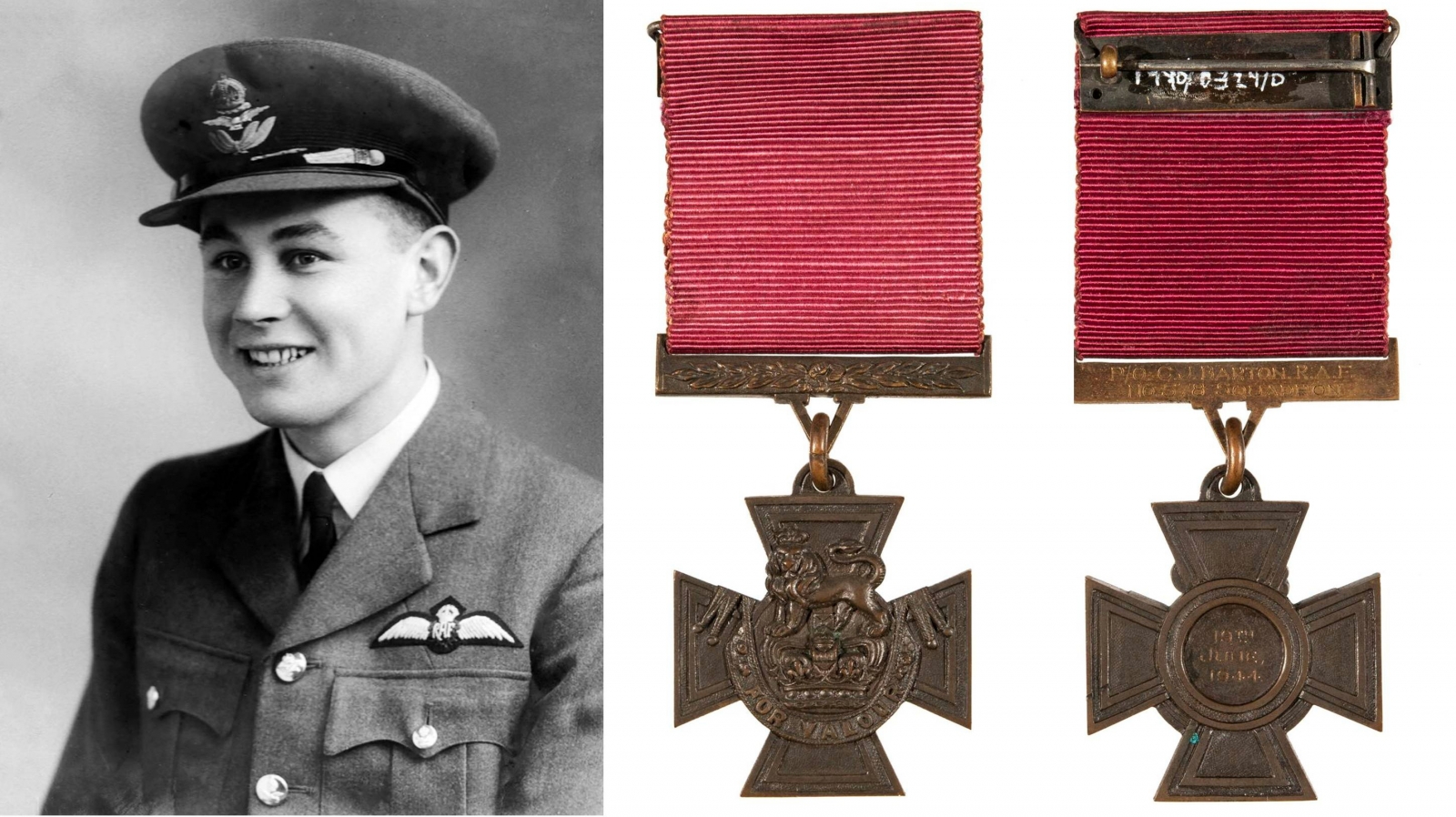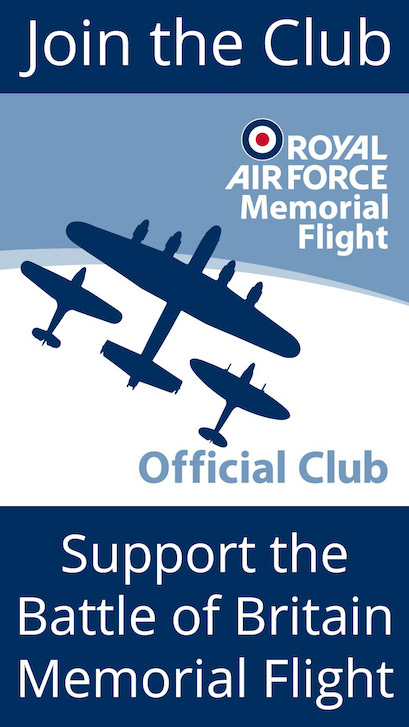March 1944 – Nuremberg Raid Victoria Cross
Header image: 578 Sqn Handley Page Halifax B.III, LK797 ‘LK-E’, was flown by Plt Off Cyril ‘Cy’ Barton (inset) on the disastrous Nuremberg Raid of 30th/31st March 1944, when he earned the only VC ever awarded to a Halifax aircrew member for a single act of gallantry. (Original artwork: Antonis Karidis)
Eighty years ago this month, on the night of 30th/31st March 1944, RAF Bomber Command suffered its heaviest losses of the entire war on a single raid against the symbolic Nazi rally city of Nuremberg.
That period would normally have been a bright-moon stand-down interval for the Main Force bomber squadrons, but an early weather forecast suggested that there would be protective high cloud on the outward route, when the moon would be up, whilst the target area would be clear. A Meteorological Flight Mosquito weather reconnaissance flight carried out before the raid reported that the protective cloud was unlikely to be present on the route, whilst the target might be covered. Surprisingly though, the raid was not cancelled and went ahead anyway with 795 aircraft dispatched – 572 Lancasters, 214 Halifaxes and nine Mosquitos – in cloudless conditions with bright moonlight that very much favoured the German night-fighter force.
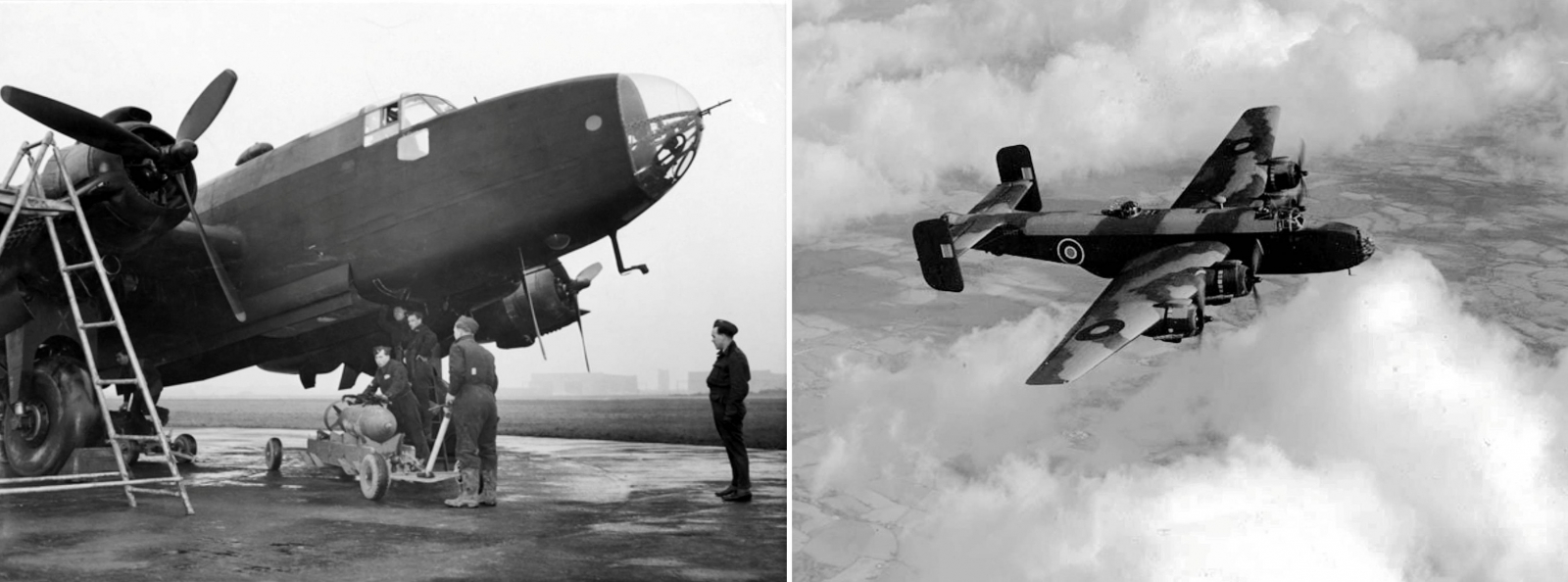
The night-fighters began to intercept the bombers before they reached the Belgian border and a fierce running battle ensued in the moonlight for the next hour. 82 RAF bombers were shot down on the outbound route and near the target, almost all by night-fighters. The bombing was ineffective and the target was only lightly damaged. The action was much reduced on the return flight, when most of the German fighters had to land to refuel and re-arm, but in all 95 bombers were lost, 11.9 percent of the force dispatched. A further 10 aircraft were written off with battle damage or crashed on return. One of those was a 578 Squadron Halifax B.III, LK797 ‘LK-E’, flown by 22-year-old Pilot Officer Cyril ‘Cy’ Barton and his crew.
Cyril Joe Barton came from a small village in Suffolk. He volunteered for aircrew duties to escape his reserved occupation as an aircraft engineer, and joined the RAF in April 1941. He trained in the USA under the Arnold Scheme, and qualified as a sergeant pilot in November 1942. Barton and his new crew attended the Heavy Conversion Unit (HCU) course with 1663 HCU at Rufforth, Yorkshire, and then joined 78 Squadron at Breighton in September 1943 to fly the Halifax operationally. Barton was commissioned as a pilot officer three weeks later and, having completed nine operational sorties (‘ops’), he and his crew were posted to join 578 Squadron at Burn, Yorkshire, in January 1944. Their second op with their new squadron was in Halifax LK797, a brand-new aircraft which was marked with the code letters ‘LK-E’; the crew named it “Excalibur”. Having completed a total of 18 ops, six of them in “Excalibur”, Barton took off from Burn on the night of 30th March 1944 for the raid against Nuremburg.
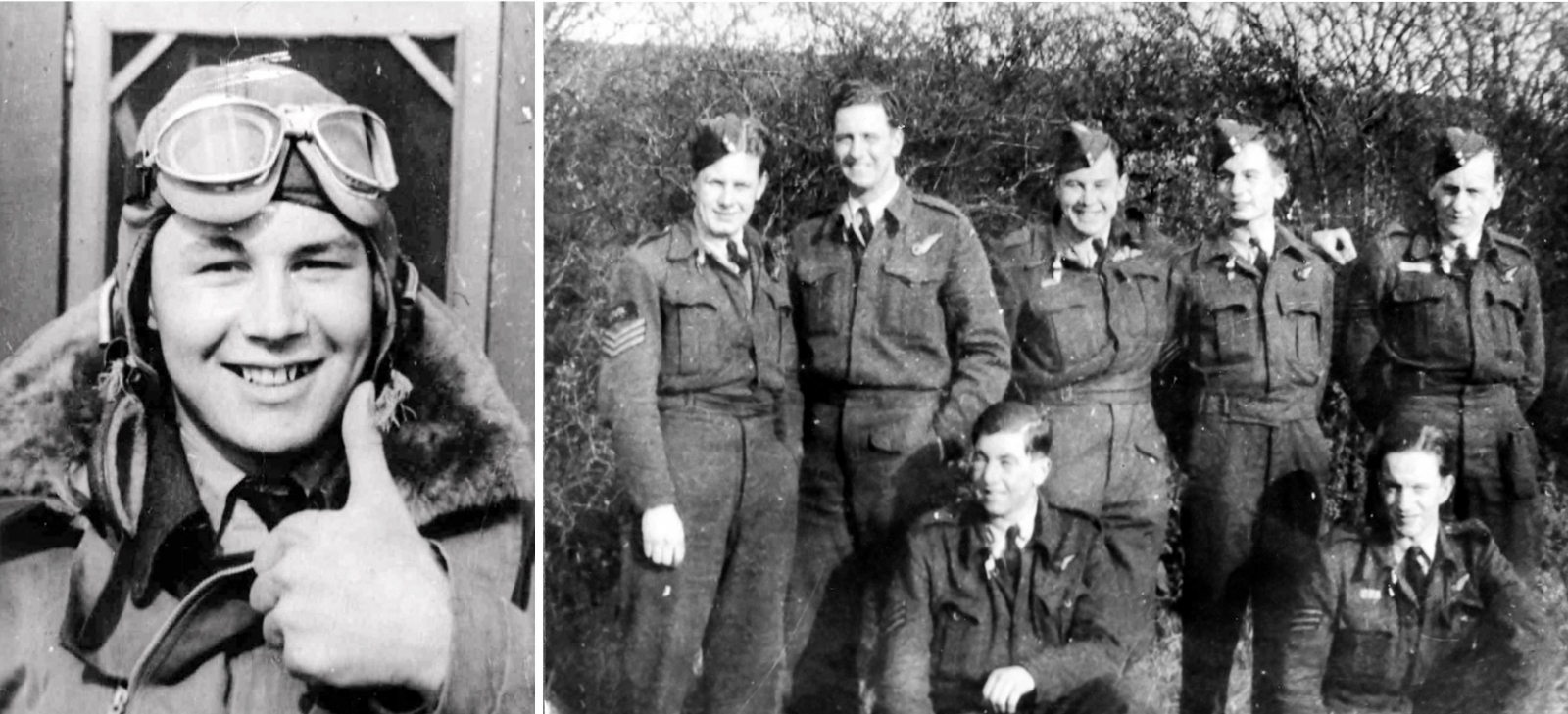
Whilst on route to the target and still 70 miles from Nuremberg, Barton’s Halifax was attacked and badly damaged by two Luftwaffe night-fighters. Two fuel tanks were punctured, both the radio and rear turret were disabled, the starboard inner engine was on fire and the intercom lines were cut. Despite several determined attacks by a Junkers Ju 88 night-fighter, and with the aid of his crew, Barton managed to evade further damage. Unfortunately, in the confusion a misinterpreted signal resulted in three of the crew bailing out to become POWs, and Barton was left with no navigator, bomb aimer or wireless operator. Despite the damage, and without those three crew members, Barton elected to continue to the target, releasing the bomb load himself.
Barton then nursed the badly-damaged Halifax back toward home and now with only one engine running he crossed the English coast at Ryhope, near Sunderland. Knowing that they were too low for the three remaining crew members – the flight engineer and the two gunners – to bail out, he ordered them to take up their crash positions behind the main wing spar. Unable to find an emergency landing ground before the aircraft ran out of fuel, Barton, now alone in the cockpit, made a gallant attempt to force-land clear of the houses and pit head workings over which he was flying. The aircraft finally crashed into the yard of Ryhope Colliery, County Durham, damaging a row of cottages and sadly killing a local miner who was hit by flying debris. On impact the Halifax’s rear fuselage broke off and landed in a deep railway cutting, with the three crewmen inside. Barton was pulled from the wreckage of the cockpit alive, but died from his injuries before reaching hospital. However, as a result of his selfless actions and bravery, his three remaining crewmen survived.
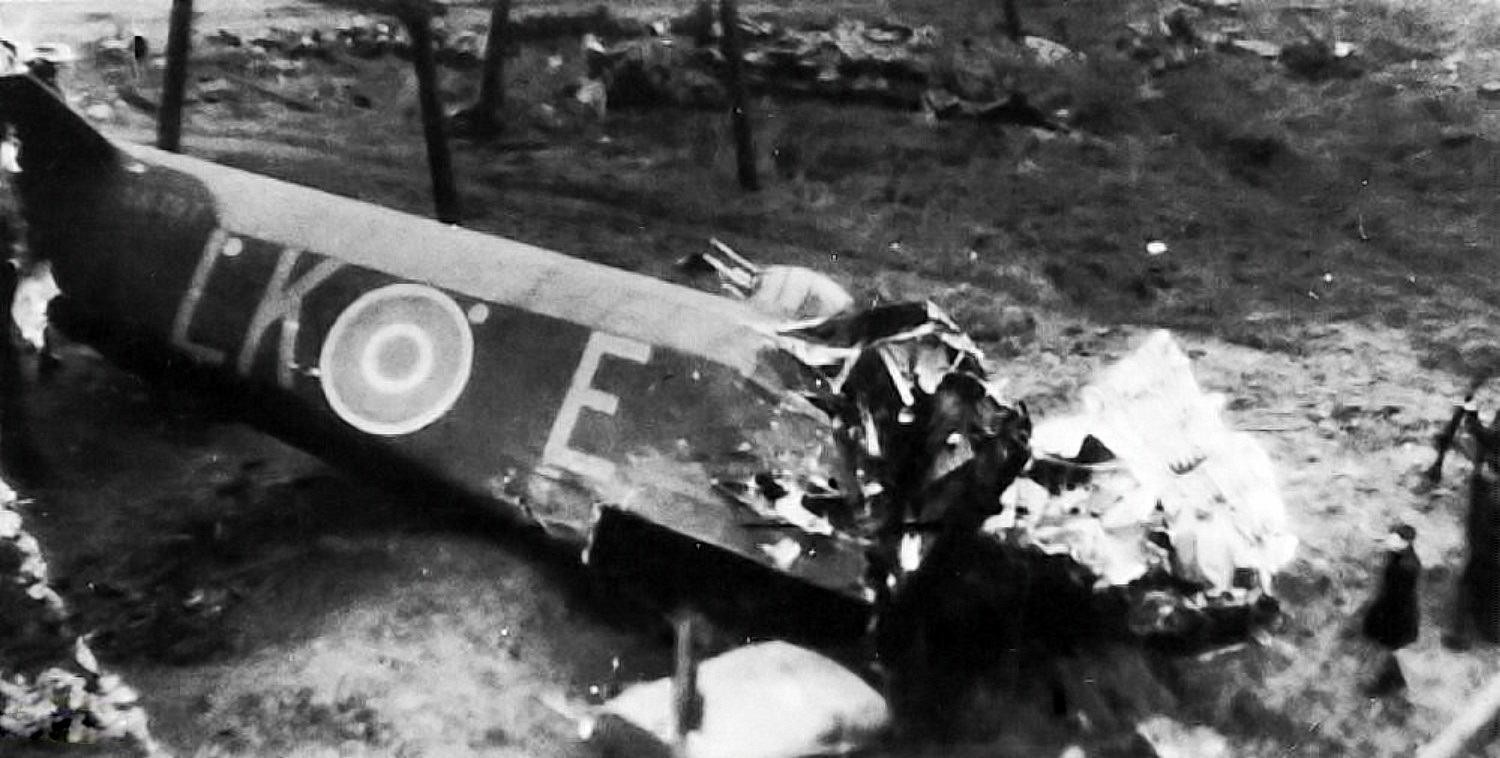
On 27th June 1944, Cyril Barton was posthumously awarded the Victoria Cross. His was the only VC awarded during Bomber Command’s Battle of Berlin, which had now officially ended, and the only VC ever awarded to a Halifax aircrew member for a single act of gallantry. On the Nuremberg raid of 30th/ 31st March 1944, a total of 537 aircrew of Bomber Command lost their lives, whilst another 157 became POWs. In one night alone the RAF had lost more men than in the entire Battle of Britain. One of those was amongst the bravest of the brave, Pilot Officer Cyril Barton VC.
Lest we forget
